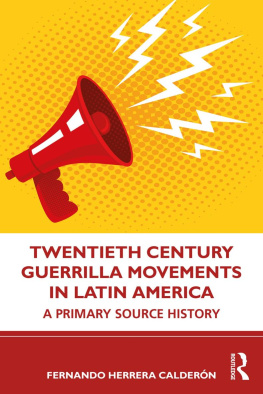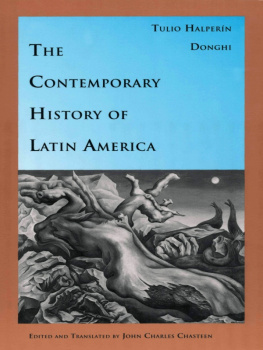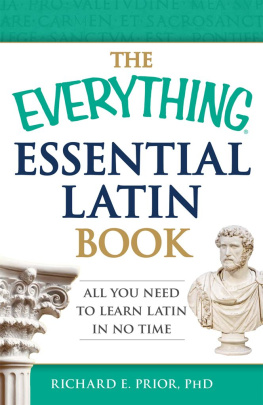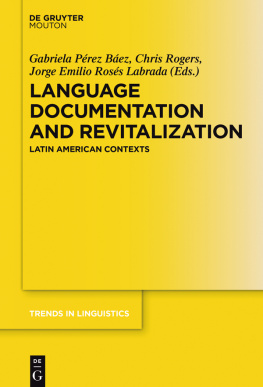Patrick Frank - Readings in Latin American Modern Art
Here you can read online Patrick Frank - Readings in Latin American Modern Art full text of the book (entire story) in english for free. Download pdf and epub, get meaning, cover and reviews about this ebook. year: 2004, publisher: Yale University Press, genre: Art. Description of the work, (preface) as well as reviews are available. Best literature library LitArk.com created for fans of good reading and offers a wide selection of genres:
Romance novel
Science fiction
Adventure
Detective
Science
History
Home and family
Prose
Art
Politics
Computer
Non-fiction
Religion
Business
Children
Humor
Choose a favorite category and find really read worthwhile books. Enjoy immersion in the world of imagination, feel the emotions of the characters or learn something new for yourself, make an fascinating discovery.

- Book:Readings in Latin American Modern Art
- Author:
- Publisher:Yale University Press
- Genre:
- Year:2004
- Rating:3 / 5
- Favourites:Add to favourites
- Your mark:
- 60
- 1
- 2
- 3
- 4
- 5
Readings in Latin American Modern Art: summary, description and annotation
We offer to read an annotation, description, summary or preface (depends on what the author of the book "Readings in Latin American Modern Art" wrote himself). If you haven't found the necessary information about the book — write in the comments, we will try to find it.
This important and welcome volume is the first English-language anthology of writings on Latin American modern art of the twentieth century.
Readings in Latin American Modern Art — read online for free the complete book (whole text) full work
Below is the text of the book, divided by pages. System saving the place of the last page read, allows you to conveniently read the book "Readings in Latin American Modern Art" online for free, without having to search again every time where you left off. Put a bookmark, and you can go to the page where you finished reading at any time.
Font size:
Interval:
Bookmark:
Edited by Patrick Frank

Readings in Latin American Modern Art
Copyright 2004 by Yale University.
All rights reserved.
This book may not be reproduced, in whole or in part, including illustrations, in any form (beyond that copying permitted by Sections 107 and 108 of the U.S. Copyright Law and except by reviewers for the public press), without written permission from the publishers.
Designed & set in Galliard and Matrix types by Chris Crochetire, BW&A Books, Inc., Durham, NC
Printed in the United States of America by Vail Ballou Press, Binghamton, NY
Library of Congress
Cataloging-in-Publication Data
Readings in Latin American modern art/edited by Patrick Frank.
p. cm.
Includes bibliographical references and index.
ISBN 0-300-10255-0 (paperbound: alk. paper)
1. Art, Latin American20th century.
I. Frank, Patrick, 1953
N 6502.5 .R 43 2004
709.80904dc22
2003023857
A catalogue record for this book is available from the British Library.
The paper in this book meets the guidelines for permanence and durability of the Committee on Production Guidelines for Book Longevity of the Council on Library Resources.
10 9 8 7 6 5 4 3 2 1
Patrick Frank
Jacinto Quirarte
MacKinley Helm
Armando Revern
Ricardo Giraldes
Pedro Figari
Xul Solar
Emilio Pettoruti
Oswald de Andrade
Rafael ngel Herreras
Jos Clemente Orozco
Tata Jesucristo Hayden Herrera
Enrique Lpez Albjar
Fred Murphy
DeWitt Peters
Selden Rodman
Edited by Donald Cosentino
Martha Zamora
Marie-Pierre Colle
Marta Traba
Lowery S. Sims
Paulina Villanueva
Paulina Villanueva
Celia Ester Arredando Zambrano
Valerie Fraser
Joaqun Torres-Garca
Gyula Kosice
Gyula Kosice
lvaro Medina
Marta Traba
Carlos Cruz-Diez
Carlos Cruz-Diez
Alejandro Otero
Jess Rafael Soto
Jess Rafael Soto
Ferreira Gullar
Lygia Clark
Hlio Oiticica
Caetano Veloso
Henry John Drewal
Jos Luis Cuevas
Luis Felipe No
Jacqueline Barnitz
Cristina Carrillo de Albornoz
Eva Cockcroft
Friedhelm Mennekes
Ricardo Pau-Llosa
Lawrence Wechsler
Leandro Katz
Susan Valds-Dapena
Frederick Ted Castle
Cecilia Vicuna
Eduardo de Jess Douglas
Patrick Frank
Latin American modern art still does not get its due. Even after two decades of postmodernist deconstruction of grand narratives, efforts to institute multicultural inclusiveness, and mostly business-oriented globalization, the canon of modern art history is still heavily tilted toward the art of Europe and North America. Students all across the United States still learn that most of the important innovations in art prior to about 1940 took place in Europe, and that after that date the center of the art world shifted to New York, preparing the ground on which the nascent New York School would almost immediately seize the leadership of the avantgarde. I have created this book in the hope that it will help to change that emphasis.
The criteria for inclusion in this canon of acceptable modern expressions have been too narrow. As one African-born curator recently noted, While strong revolutionary claims have been made for the avant-garde within Westernism, its vision of modernity remains surprisingly conservative and formal.
The basic problem that gives rise to the neglect of Latin American modern art is structural. The wealth and resources that support research and education about art are concentrated in Europe and the United States, but the human characteristics necessary for the creation of vital, compelling, and innovative art are much more widely dispersed. The countries with the greatest critical mass of infrastructure arrogate to themselves the rubric mainstream, and relegate areas of lower strategic importance or thinner art culture to the periphery. This imbalance of resources and creativity leads to strange lacunae. To mention just a few examples, there are many books about Georgia OKeefe, as there probably should be, but there are far fewer about Tarsila do Amaral, an equally passionate but probably more audacious artist. The dolls of Hans Bellmer have been much studied and even imitated, but the contemporaneous and equally multivalent dolls of Armando Revern have received very little attention. It is easy to find information about Dan Flavin and Frank Stella, innovators in the use of neon and the shaped canvas, but Gyula Kosice and Ral Lozza, who anticipated these developments by about fifteen years, are nearly invisible. Even postcolonial critics have not yet gotten around to studying the series of sixty paintings by Oswaldo Guayasamn on the theme of Frantz Fanons The Wretched of the Earth.
To be sure, there has been some progress in recent years, often in the form of museum exhibitions and their accompanying catalogues. I believe, perhaps naively, that education can also help to solve this problem. If we continue to broaden and deepen the amount of information available, then more people will begin to sense the beauty, diversity, and searching urgency, not to say the quality, of a wide spectrum of Latin American modern art.
In gathering and presenting new information about this underrecognized area, I believe it important to let Latin Americans speak for themselves. Where important source writings existed only in Spanish or Portuguese, I have attempted to render them in English. Latin American art tends to be connected to other cultural expressions such as music and literature in a more integral way than in North America, so I have also included a few documents that show this affinity, most of them new translations. In general, this book favors primary sources, artists statements, manifestoes, interviews, and other types of documents that give principal emphasis to the actual voices of Latin American artists and writers. This immediately raises the difficult question of who is a Latin American. The most obvious answer is a person who was born in or did most of his or her work in a Latin American country, but even this simple formulation is debatable. For example, I have left out Marisol, Roberto Matta, and Lucio Fontana, believing that they are sufficiently represented in the mainstream. At the same time, perhaps arbitrarily, I have included Julio Le Parc, Leonora Carrington, and Alfredo Jaar. There is even some disagreement about which countries constitute Latin America. I have omitted Anglophone Jamaica and included Francophone Haiti. On both of these questions, I have tried to choose a middle path from among the answers available in the present literature.
The novels of Severo Sarduy provide some of the best answers to the problem of Latin American identity, if indeed it is one. The protagonist of one of these postmodern antinarratives is Louis Leng, a Cuban-Chinese who was born to the accompaniment of Afro-Cuban
Font size:
Interval:
Bookmark:
Similar books «Readings in Latin American Modern Art»
Look at similar books to Readings in Latin American Modern Art. We have selected literature similar in name and meaning in the hope of providing readers with more options to find new, interesting, not yet read works.
Discussion, reviews of the book Readings in Latin American Modern Art and just readers' own opinions. Leave your comments, write what you think about the work, its meaning or the main characters. Specify what exactly you liked and what you didn't like, and why you think so.





